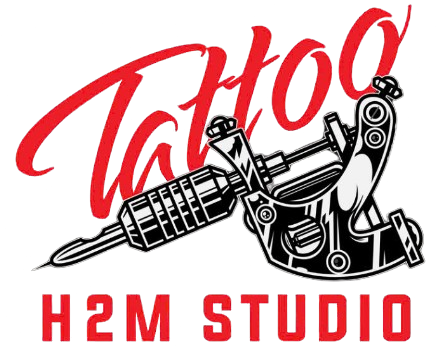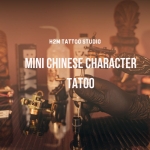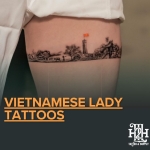The question "numbing cream vs. no numbing cream for tattoos" is one of the most common dilemmas faced by both first-time clients and experienced tattoo enthusiasts. At H2M Tattoo Studio, we understand that choosing the right pain management approach can significantly impact your tattoo experience and results. This comprehensive guide examines the science, benefits, and risks of both options, helping you make an informed decision that aligns with your personal comfort level and tattoo goals.
Understanding the Pain Spectrum of Tattooing
Tattoo pain is a complex physiological response that varies significantly from person to person and location to location on the body. When a tattoo needle penetrates your skin at a rate of 50 to 3,000 times per minute, it creates micro-wounds that trigger your body's pain response system.
The tattooing process involves needles piercing through the epidermis (outer skin layer) and depositing ink into the dermis (deeper skin layer). This penetration stimulates nerve endings, particularly nociceptors—specialized sensory neurons that detect potentially harmful stimuli. The intensity of pain you experience depends on several physiological factors:
-
Nerve density: Areas with higher concentrations of nerve endings, such as ribs, spine, hands, and feet, typically produce more intense sensations
-
Skin thickness: Thinner skin areas like the inner arm or ankle tend to be more sensitive than thicker-skinned areas like the outer arm or thigh
-
Blood flow: Well-vascularized areas may experience different pain sensations due to increased circulation
-
Bone proximity: Locations where skin sits directly over bone often create more discomfort due to vibration transmission
Beyond the physical aspects, psychological and emotional factors significantly influence pain perception. Anxiety can amplify pain signals, while relaxation techniques and positive mental preparation can help manage discomfort. Individual pain tolerance varies dramatically—what feels unbearable to one person might be perfectly manageable to another.
The typical tattoo session without pain relief involves waves of sharp, burning, or scratching sensations that intensify over time as endorphins wear off and inflammation increases. Many clients describe the initial minutes as manageable, with discomfort building as the session progresses. Understanding this natural progression helps set realistic expectations regardless of your pain management choice.
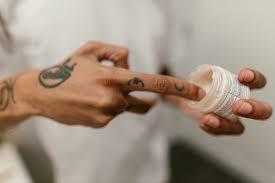
>>>> READ MORE: Can you get a tattoo while pregnant? 9 Critical Safety Considerations Every Expecting Mother Should Know
Numbing Creams: Composition, Mechanism, and Use
Tattoo numbing creams are topical anesthetics specifically formulated to reduce pain sensation during the tattooing process. These products contain active ingredients that temporarily interrupt nerve signal transmission, creating a localized area of reduced sensitivity.
The most common active ingredients in tattoo numbing creams include:
-
Lidocaine: The most prevalent ingredient, typically ranging from 4% to 10% concentration in over-the-counter products
-
Prilocaine: Often combined with lidocaine for enhanced effectiveness
-
Benzocaine: Provides surface-level numbing but may cause allergic reactions in sensitive individuals
-
Tetracaine: A longer-lasting anesthetic sometimes found in prescription-strength formulations
These ingredients work by blocking sodium channels in nerve cell membranes. When applied to the skin, they prevent nerve cells from generating and transmitting pain signals to the brain. Lidocaine, for example, binds to voltage-gated sodium channels and blocks the influx of sodium ions necessary for nerve impulse generation. This creates a temporary "communication breakdown" between the tattoo site and your brain's pain processing centers.
The effectiveness of numbing creams depends heavily on proper application technique and timing. Here's the step-by-step process for optimal results:
Application Protocol:
-
Clean the tattoo area thoroughly with antibacterial soap and pat dry
-
Apply a thick, even layer of numbing cream (approximately 2-3mm thick) over the entire tattoo area
-
Cover with plastic wrap or occlusive dressing to prevent evaporation and enhance absorption
-
Wait 45-90 minutes before the tattoo session (timing varies by product and skin type)
-
Remove covering and gently wipe away excess cream with a clean cloth
-
Allow your tattoo artist to clean the area with their preferred antiseptic before beginning
Timing is crucial because numbing creams require adequate absorption time to reach nerve endings effectively. Applying too little cream or removing it too early significantly reduces effectiveness. Conversely, leaving cream on too long can oversoften the skin, potentially affecting ink absorption and tattoo quality.
Most over-the-counter numbing creams are legal and readily available, though some higher-concentration formulations require prescriptions. Professional tattoo studios often have preferred products they recommend based on compatibility with their techniques and client safety considerations.
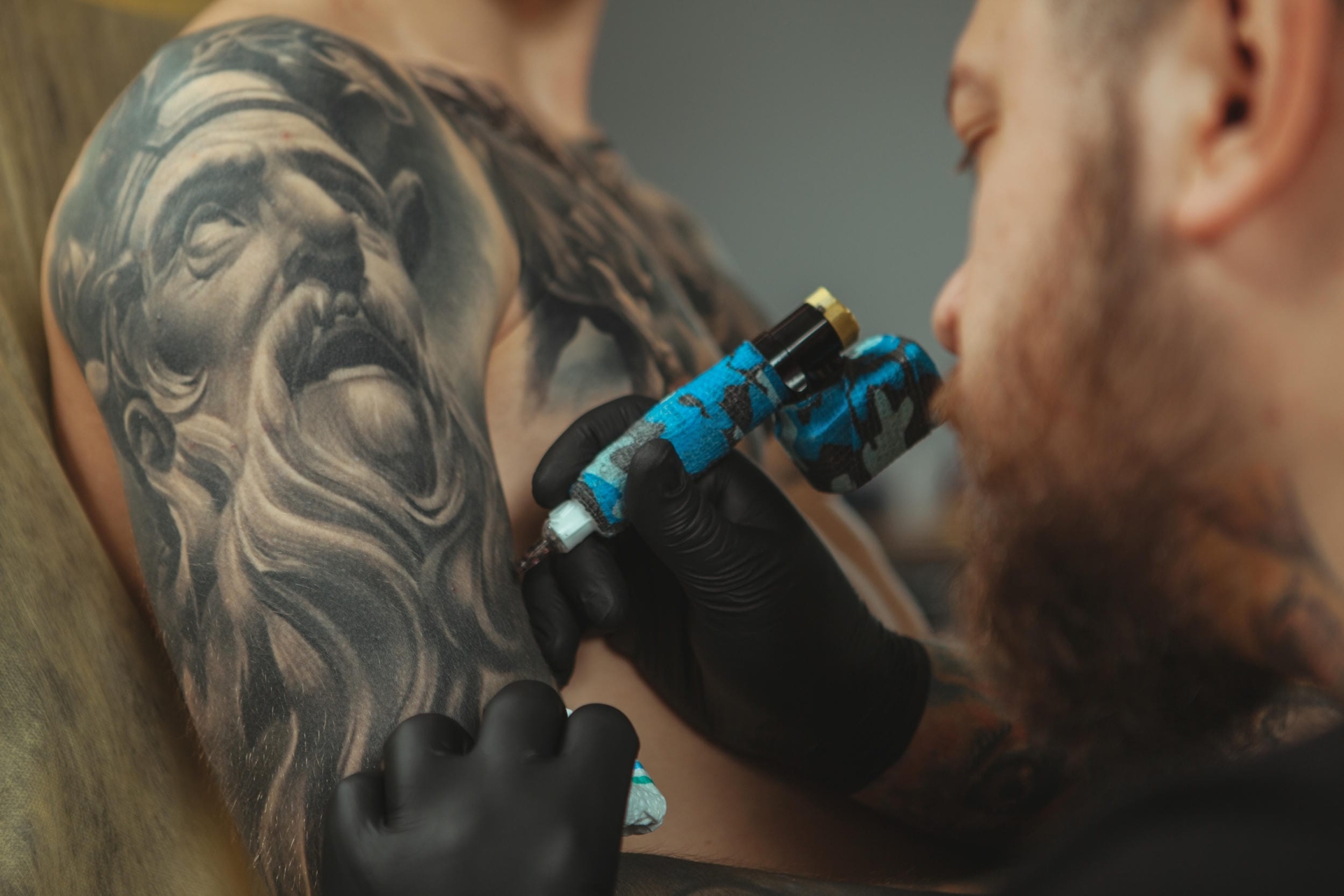
>>>> SEE MORE: what is a tattoo ? A Story Etched in Ink
Advantages of Using Numbing Creams for Tattoos
Scientific research and extensive user reports demonstrate that properly applied numbing creams can reduce tattoo pain by 60-90%, transforming what might be an unbearable experience into a manageable one. A study published in the Journal of Dermatological Treatment found that topical anesthetics significantly decreased pain scores during cosmetic tattooing procedures.
The primary advantages of using numbing cream include:
1. Significant Pain Reduction: Users consistently report dramatic decreases in pain sensation, with many describing the tattooing process as feeling like "pressure" or "light scratching" rather than sharp, burning pain. This reduction allows clients to sit for longer sessions without the cumulative stress buildup that often occurs with natural pain progression.
2. Extended Session Capability: Reduced pain enables longer tattoo sessions, which can be particularly beneficial for large pieces or complex designs. Instead of breaking a large tattoo into multiple shorter sessions due to pain tolerance limits, clients can often complete more work in fewer appointments. This approach can actually improve tattoo quality by maintaining design continuity and reducing healing variations between sessions.
3. Anxiety and Stress Reduction: The psychological benefits of numbing cream extend beyond physical comfort. Knowing that pain will be manageable significantly reduces pre-tattoo anxiety, allowing clients to focus on the artistic process rather than dreading discomfort. This mental relaxation often improves the overall tattoo experience and client satisfaction.
4. Improved Tattoo Precision: When clients aren't fighting pain, they naturally remain more still and relaxed during the tattooing process. Reduced flinching, muscle tension, and involuntary movement allows tattoo artists to work with greater precision, potentially improving line quality and shading consistency. This is particularly important for detailed work requiring steady positioning.
5. Better Pain Management for Sensitive Areas: Numbing creams are especially valuable for notoriously painful tattoo locations such as ribs, sternum, spine, hands, feet, and genital areas. These high-sensitivity zones can be nearly unbearable for some individuals without pain management assistance.
When compared to alternative pain management options like topical sprays or ice application, numbing creams provide longer-lasting and more consistent relief. Sprays typically offer only temporary surface numbing, while ice can cause skin constriction that affects tattoo quality.
>>>> READ MORE: Your Ultimate Guide: is it safe to get a tattoo in vietnam ?
Potential Drawbacks and Risks of Numbing Creams
While numbing creams offer significant benefits, they're not without potential drawbacks and risks that require careful consideration before use.
Skin Texture and Ink Absorption Changes: Numbing creams can temporarily alter skin texture, making it softer, slightly swollen, or more pliable. Some tattoo artists report that treated skin may not accept ink as predictably as natural skin, potentially affecting color saturation or causing slight ink spread. The extent of this effect varies by individual skin type, cream formulation, and application technique.
Allergic Reactions and Skin Irritation: Common adverse reactions include:
- Contact dermatitis (redness, swelling, itching) • Allergic reactions to specific ingredients (particularly benzocaine)
- Skin discoloration or temporary blanching • Burning or stinging sensations
- Rare but serious reactions like methemoglobinemia (with benzocaine products)
To minimize risks, always perform a patch test 24-48 hours before your tattoo appointment by applying a small amount of cream to an inconspicuous skin area.
Aftercare Complications: Numbing effects typically fade 1-3 hours after application removal, but this timing can affect early aftercare awareness. Clients may not immediately notice if their fresh tattoo is experiencing unusual irritation or requires attention during the critical first hours of healing.
Professional Artist Concerns: Many experienced tattoo artists express reservations about numbing cream use. Common professional concerns include:
"I've noticed that numbed skin sometimes doesn't give me the same tactile feedback I rely on for depth control," explains Sarah Martinez, a veteran tattoo artist with 15 years of experience. "It can make the skin feel 'false' under the needle."
"While I understand why clients want numbing cream, I always discuss the potential trade-offs," notes James Chen, owner of a renowned tattoo studio. "Some of my best work happens when clients are fully present in the experience, even if it means managing natural discomfort."
Artists also report that heavily numbed clients may not provide accurate feedback about needle pressure or positioning, which experienced artists rely on for optimal results.
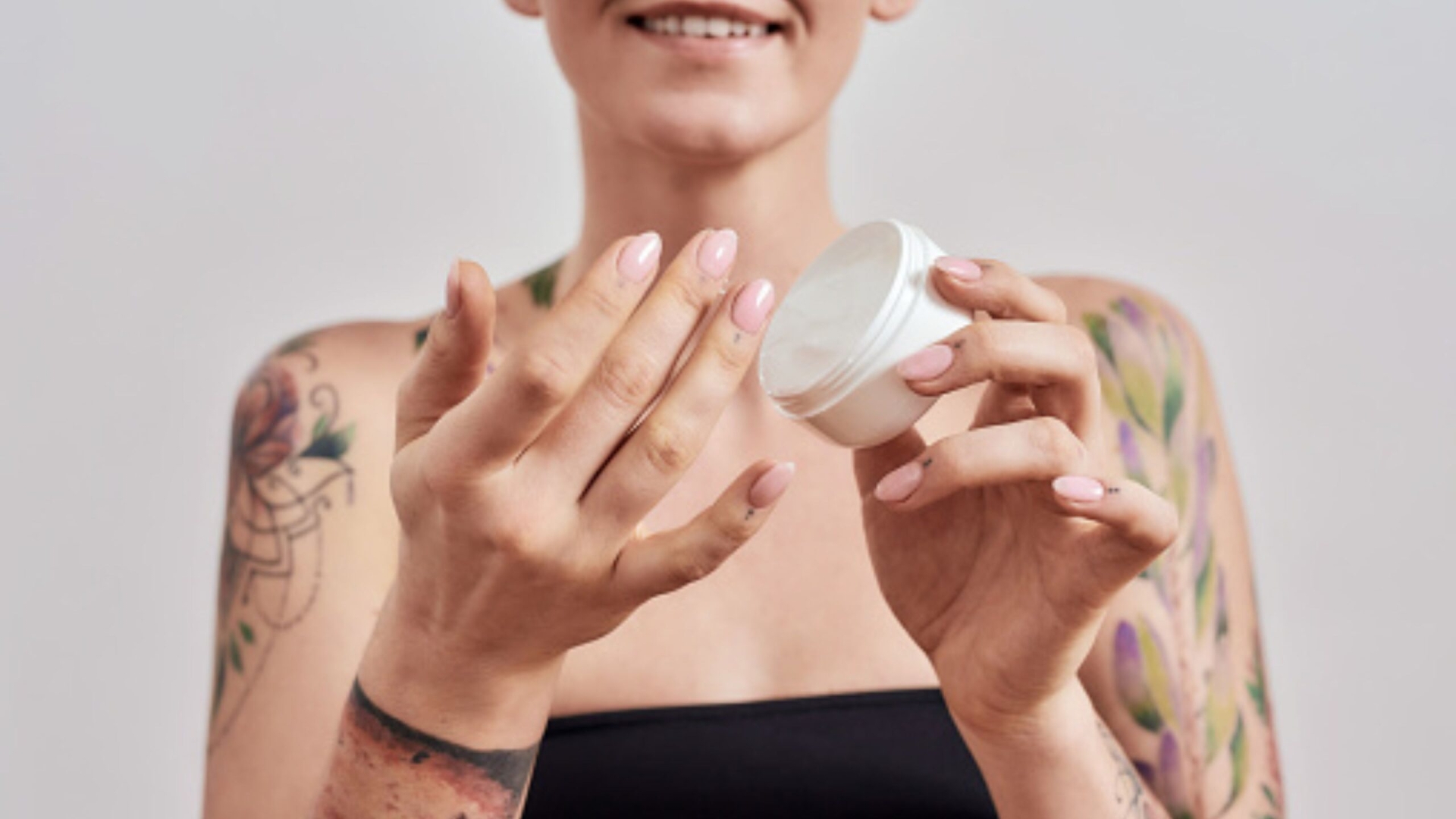
>>>> LEARN MORE: what are the benefits of getting a tattoo ? Are There Any Risks?
Tattooing Without Numbing Cream: Benefits and Limitations
Choosing to forego numbing cream represents a traditional approach to tattooing that many clients and artists still advocate for various practical and philosophical reasons.
Cultural and Personal Significance: Many tattoo enthusiasts view pain as an integral part of the tattooing ritual—a rite of passage that adds meaning and significance to their body art. This perspective treats the discomfort as a transformative experience that creates a deeper connection between the client and their tattoo. Some cultures historically associated tattoo pain with spiritual growth, personal strength demonstration, or community belonging.
Health and Chemical Avoidance: Individuals with sensitive skin, allergies to topical anesthetics, or preferences for chemical-free approaches often choose natural tattooing. This decision eliminates any risk of adverse reactions to numbing agents while ensuring that skin remains in its natural state throughout the process.
Optimal Tattoo Quality Considerations: Untreated skin provides tattoo artists with natural feedback mechanisms and tactile responses that many professionals prefer. Natural skin tension, texture, and response to the needle can help experienced artists gauge appropriate depth, speed, and technique adjustments in real-time. Some artists report achieving more consistent results when working on natural, unnumbed skin.
Authentic Sensory Experience: Clients who choose natural tattooing often report a more authentic, connected experience with their body art creation. The ability to feel every line and detail being created can increase appreciation for the artist's skill and create lasting memories associated with the tattoo's origin story.
Limitations and Challenges: However, natural tattooing isn't suitable for everyone. Significant limitations include:
Pain-induced movement and muscle tension can compromise tattoo quality, particularly for clients with low pain tolerance. Extended sessions may become impossible without breaks, potentially affecting design continuity. Some individuals may experience panic responses or fainting during intense pain, creating safety concerns.
The key is honest self-assessment of your pain tolerance, tattoo placement sensitivity, and personal goals for the tattooing experience.
Professional Insights: What Tattoo Artists Recommend
Professional tattoo artists offer valuable perspectives based on years of experience working with both numbed and natural skin. Their insights can help guide your decision-making process.
When Artists Encourage Numbing Cream Use: Most professional artists support numbing cream for specific circumstances:
"For large pieces in sensitive areas, I actually recommend discussing numbing options," shares Maria Rodriguez, an award-winning tattoo artist. "I'd rather have a client comfortable and still than struggling through pain that compromises the artwork."
Artists frequently recommend numbing cream for:
- First-time clients with high anxiety • Large-scale projects requiring 4+ hour sessions
- Anatomically sensitive locations (ribs, spine, feet) • Clients with documented low pain tolerance
- Medical conditions affecting pain sensitivity
When Artists Discourage Numbing Cream: Conversely, many artists prefer working without numbing cream for: • Small to medium tattoos in less sensitive areas • Detailed work requiring precise client feedback • Clients with histories of skin sensitivities • Quick sessions under 2 hours
"I find that clients who tough it out naturally often have a more meaningful relationship with their tattoo," observes David Kim, a traditional tattoo specialist. "There's something to be said for earning your ink through the experience."
Impact on Session Flow and Safety: Professional artists emphasize that open communication about pain management creates the safest, most effective tattoo sessions. They recommend discussing numbing cream plans during consultation appointments, not on tattoo day, to ensure proper preparation and realistic expectation setting.
Experienced artists also stress the importance of quality numbing products, warning against bargain or unknown brands that might cause adverse reactions or poor results.
The question of “numbing cream vs. no numbing cream for tattoos” doesn’t have a one-size-fits-all answer—it depends entirely on your individual circumstances, pain tolerance, and the specifications of your tattoo. Both methods can result in exceptional tattoos when done safely and with professional guidance. Schedule a consultation with the experienced tattoo artists at H2M Tattoo Studio to discuss the best pain management strategy for your specific tattoo and ensure your journey results in artwork you’ll cherish forever.
>>>> NOTE NOW:

